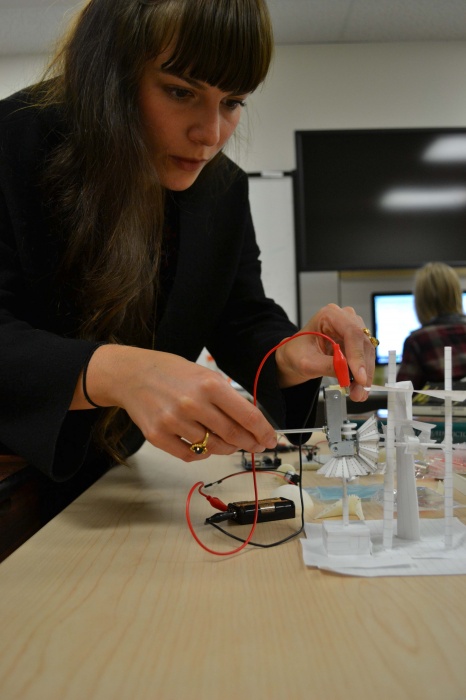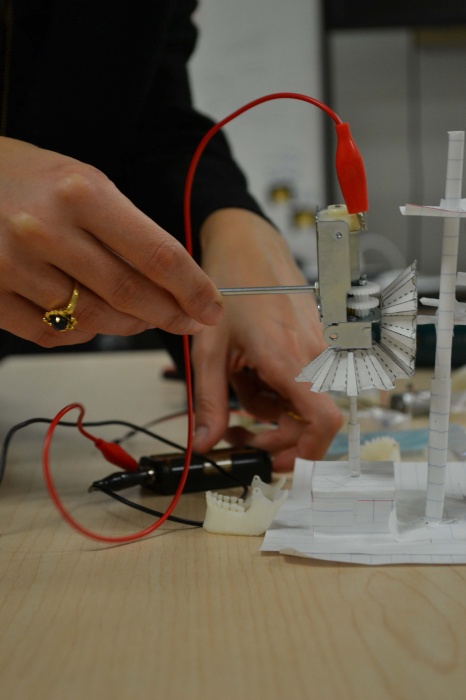The rise of consumerism has had some interesting effects on our society. One of those effects is the loss of connection between people and the things they’re consuming. It wasn’t so long ago that people made almost everything they had themselves. Now, outside of the occasional hobby, it’s rare for people to use their own hands to create things.
But something called the maker movement is a push in the opposite direction. People from all over the world are starting to get together in maker labs and work on projects individually and in groups. These projects cover a variety of disciplines, from woodworking to 3D printing, and even chemistry and biology. Member-driven labs and those facilitated by a larger organization offer classes so people can learn and experiment with disciplines they haven’t been involved in before.

According to its purveyors, the maker movement has come just in time, as they say society is beginning to forget its humble origins. It’s important that we realize that not everything should be made in China for 22 cents and that a lot of satisfaction can be gained from using something that we built with our own two hands.
For many people, the idea of “do it yourself” is an unexplored frontier. There simply hasn’t been much of an opportunity in recent years to work with one’s hands.
“There’s been a tendency over the last couple decades for consumer culture to focus on things that are made elsewhere,” explains Victoria Maker Space board member Derek Jacoby. “This is totally antithetical to the way things were just a generation ago, where if you wanted it fixed, you fixed it yourself. The maker movement is a rediscovery of the benefits, both economic and satisfaction-wise, of making things yourself.”
Some trades do provide opportunities, but these are limited and available only to those who would choose them as a career. On top of this, our society no longer values the ability of people to make things themselves like it used to; not surprising, when we look at the convenience of consumerism. So where does this leave us? In reality, most people have the capacity to make things; they simply lack inspiration and a space to do so.
A simpler time
Jentery Sayers is an assistant professor of English at UVic and director of the maker lab there. He explains that one of the first things that inspired him to become a maker was his grandparents, who were trying their best to be self-sufficient.
“When I was a kid my grandparents lived off the land,” says Sayers. “So occasionally my parents would drop me off there for the summer and I would basically spend time with my grandparents learning how to grow vegetables, or can and preserve goods, or raise livestock. They lived basically off of everything in or around their home, and they would trade things with people nearby. It was really intriguing to me how intimately they knew what they consumed.”
Luckily, for those of us who like to play the inventor, as long as there has been a consumerism movement, there has been an opposing movement. Sayers explains that one of the earlier influences of the maker movement was the Luddite movement (textile artisans in the 19th century who protested the newly implemented “power looms,” which replaced human labour). Sayers explains that there are many other points of inspiration or reference that his UVic group uses in the maker lab.
“There are also a lot of people doing inspiring contemporary work,” explains Sayers. “We also look quite a bit at the punk and feminist scenes from the ’70s and ’80s. The kind of aesthetic of zines, the whole culture around making your own publication process and circulating your own views and perspectives, and also getting to know how printing worked is really inspiring to us,” explains Sayers. “Although, I think if you were to ask, ‘What’s the maker movement?’ most people go to Make magazine and MakerBots. Historically, the maker movement’s been around for centuries, and it’s just recently that industry and private sectors have found a way to brand it that really brings people’s attention to it.”
At times, the private sector’s involvement in movements is unwelcome, but a case could be made that here it was necessary to drum up the interest of those who would otherwise remain unaware. In recent years, maker labs and maker spaces have become available to almost anyone who wishes to try them out. Victoria sports at least two such labs, each with a large group of dedicated members.
“One of the appeals that maker spaces are continually having on academic campuses is that they are kind of spaces for interdisciplinary or cross-disciplinary work,” says Sayers. “Someone might have a problem or idea that people come together to work on, and historically that’s kind of difficult to do on a lot of university campuses, because even regardless of the size of your campus, you tend to be split up by discipline. So that’s really unique to have that cross-disciplinary perspective.”
The maker lab at UVic runs on a strong teamwork initiative. Because the maker movement itself doesn’t belong to one specific type of craftsperson, it allows for a multivalent community of makers. In fact, it could be said that the very essence of the maker movement is this unification.
A brief history of maker space and time
“My day job is a tower rigger,” explains Vince Geisler, one of Maker Space Victoria’s most active members. “I work on towers hoisting up radios and that sort of thing. My not day job is a molecular biologist in training. I knew nothing about chemistry or biology a year ago. It’s the way I learn: I’ve got to have a problem to slam my head against repeatedly and something that will crumble slowly, rather than giving easily, and that forces me to learn.”
Besides a self-sustained biology lab, Maker Space Victoria, situated in the tech park behind Camosun’s Interurban campus, features a laser wood cutter, a 3D printer, a woodshop, a metal shop, and more.
“We’ve got some metalworking equipment; I knew the most about it out of everybody, so I kind of took that on,” says Geisler. “I’m self-taught about that. I’ve actually taught myself almost everything I know, except maybe English.”

As Geisler exhibits, learning new things is a big part of the maker movement, and an environment that fosters education like Maker Space Victoria is very beneficial to its members. The vastness of the facility and mixed expertise of its makers mean that no project is too farfetched.
“I’m continually surprised by the projects people want to do,” says Jacoby, “and one of the amazing things about having a shared space like this is that you get to see what people come in and want to build. It’s totally incredible to see someone come in and be, for instance, grinding a telescope lens on the metal lathe just because they can. Honestly, the challenge is never finding fun things to do, but rather finding enough time to do all the possible fun things.”
Having gone from a few members working out of a small outbuilding in the back of a farmer’s field in central Saanich to a group of more than 60 full-time members in just a few years, Jacoby is very proud of Maker Space Victoria.
After a 13-year-old boy saved up his own money to get a membership, the Maker Space Victoria board even decided to implement a student membership rate. Jacoby says that new people always seem to be interested, and they are always trying to find ways to include more people.
“At the moment we’re still finding a lot more interested people than not, and so we’re on a fairly rapid growth curve,” he explains. “There’s also some other things going on in town; the libraries, for instance, have been out several times talking about how they can foster maker spaces. And so I think that right now we’re a one-stop shop for everything that allows you to make things, but we’ll end up finding little specialist branches of maker spaces in libraries and schools as time goes on.”
A space of our own
With many schools getting involved, it’s not surprising that Camosun itself will soon join the maker revolution. Last year, Ross Lyle, chair of mechanical engineering technology at Camosun, applied and was approved for a maker space at Camosun through the 2014 President’s Funds grant.
“We have not yet begun the project,” he explains. “However, we have many elements of the maker space environment within the Mechanical Engineering Technology department. The Technology Access Centre even has industrial-grade equipment, similar to what is found in some maker spaces.”
Lyle hopes to use already existing equipment on campus under a maker space umbrella, but his first challenge is to find the space.
“In there, projects will be masterminded, designed, and assembled with parts constructed using the variety of equipment found around the campus,” he says. “We envision it as a space for students from multiple disciplines to create and collaborate on interesting projects of their own design. Currently, we already have five 3D printers on campus, a laser cutter, a well-equipped machine shop, and an automation lab.”
As there is more and more interest in the field, the maker movement seems to be just beginning. With its ability to bring people together and its capacity to increase people’s empathy to the effort that goes into everyday things we take for granted, the maker movement just might be exactly what the people of today need.

Maker culture is a fascinating and constructive development. I will be interested to see what form it takes as it comes to the island. Makers spaces are developing quite well in Vancouver, a lot seems to be happening.
FREE PLAN BOOK: for those who are building their own space visit
http://www.easybuildingplans.com/digital-publications
there you will find a free plan book